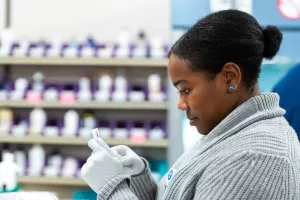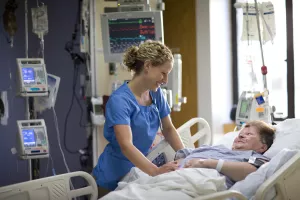A comprehensive infection prevention to protect our patients
At Tufts Medical Center, we are dedicated to preventing the transmission of infections to patients, visitors and our staff. To meet this goal, we have created a comprehensive Infection Prevention Program, which encompasses all of our inpatient and outpatient locations. The Program allows us to address infection prevention from several different angles: It includes education for all of our staff, as well as for our patients, families and visitors. The Program also supports a microbial management team to ensure optimal antibiotic usage, which in turn can help reduce the risk of infections with drug-resistant bacteria and C. difficile.
Tufts Medical Center also monitors key practices aimed at preventing drug-resistant infections (such as MRSA), including good hand hygiene and adherence to Standard and Contact Precautions. We monitor the rates of infections associated with vascular catheters and urinary catheters, as well as ventilator-associated pneumonia. We have implemented evidence-based protocols to reduce the risk of these infections, as well as to reduce the risk of wound infections after surgery.
What patients can do
We recommend the following steps to help you prevent infections:
- Remind caregivers to wash their hands before examining or treating you.
- Ask family members or friends not to visit you feel ill.
- Ask your doctor if you should receive a flu or pneumonia vaccine.
- Wash your hands carefully after handling any type of soiled material. This is especially important after you have used the bathroom.
- Wash your hands before eating and/or touching your face.
- Tell a nurse promptly if any of your dressings become wet or loose.
- Tell a nurse promptly if any of your catheters or tubes become loose or dislodged.
- Carefully follow your doctor's instructions about breathing treatments and getting out of bed.

